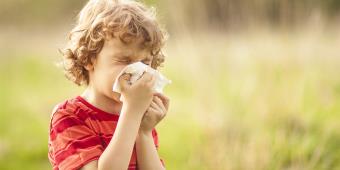Children and Springtime Sneezes
posted : 17/Aug/2018

Gone are the winter colds and coughs but make way for the sneezing sniffles that come with springtime allergies.
Seasonal hay fever, also known as allergic rhinitis, is extremely common at this time of year. It is said to affect approximately 18% of Australian children. Allergic rhinitis is usually caused by an allergic sensitivity to tiny particles that are released into the air called pollen and it tends to be at its worst during spring!
If your little one suffers from hay fever or other allergies all year round, they may also be sensitive to indoor allergens such as dust mites or even pets.
The symptoms of allergic rhinitis are easy to identify in kids, it will typically present as a runny nose, sneezing, red or itchy eyes. Although these symptoms can closely resemble the common cold, there is no fever present with allergic rhinitis. Some days symptoms can be worse than others, it all depends on what has triggered the allergy.
Children who suffer from hay fever or other seasonal allergies can have interrupted sleep resulting in poor concentration during child care or school.
What can you do to protect your child from springtime allergies?
- Minimize outdoor activities when it’s windy, this tends to be when the pollen count is high
- Wash hands and face after playing outside, sometimes a change of clothes is necessary
- Keep the car windows closed when driving
- Avoid having cloths outside to dry, use an indoor hoist
- Bath kids before bed to prevent the pollens interfering with their sleep
- Use hypoallergenic bedding and replace or wash pillows regularly
- Talk to your family doctor about an antihistamine that is safe and formulated for children
A helpful tool to check is the Pollen Index. This will help your family forecast and prepare for those high pollen count days.
As spring sets in, pollen proof your home and environment as best you can.
Library Home